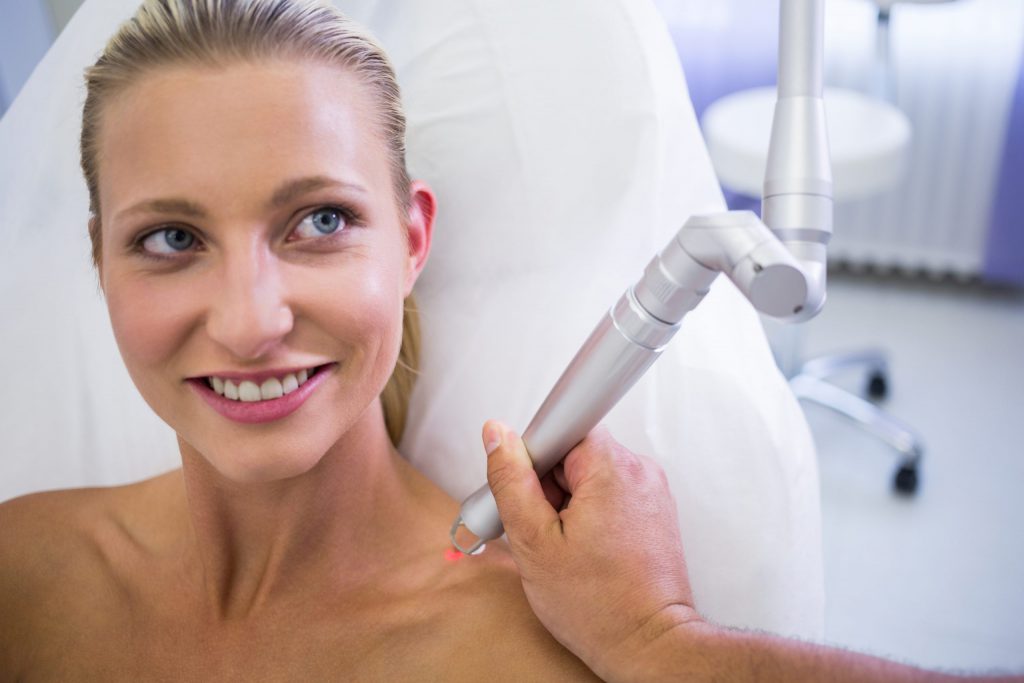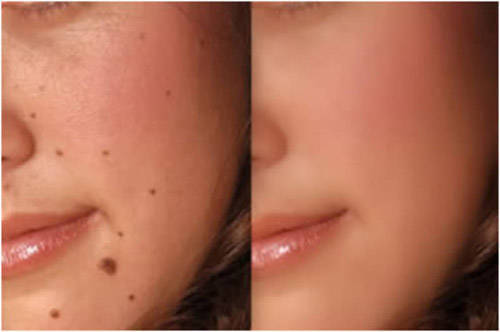Understanding the basics
Skin tags are painless, noncancerous growths on the skin. They’re connected to the skin by a small, thin stalk called a peduncle. Skin tags are common in both men and women, especially after age 50. They can appear anywhere on your body, though they’re commonly found in places where your skin folds such as the:
- armpits
- groin
- thighs
- eyelids
- neck
- area under your breasts
How are skin tags removed?
Tiny skin tags may rub off on their own. Most skin tags stay attached to your skin. In general, skin tags don’t require treatment. If skin tags hurt or bother you, you may opt to have them removed.
Your doctor may remove your skin tags by:
- Cryotherapy: Freezing the skin tag with liquid nitrogen.
- Surgical removal: Removing the skin tag with scissors or a scalpel.
- Electrosurgery: Burning off the skin tag with high-frequency electrical energy.
- Ligation: Removing the skin tag by tying it off with surgical thread in order to cut off its blood flow.
Having small skin tags removed doesn’t usually require anesthesia. Your doctor may use local anesthesia when removing large or multiple skin tags.
You can also try natural remedies to remove skin tags. These include tea tree oil, apple cider vinegar, and lemon juice. Keep in mind that there’s no scientific evidence to support these remedies.
It’s not a good idea to try to remove skin tags on your own. Many websites offer DIY instructions for removing skin tags by tying them off with string or applying a chemical peel. Even in a sterile environment, removing skin tags may cause bleeding, burns, and infection. It’s best to let your doctor handle the job.
How to identify a skin tag
The main way to identify a skin tag is by the peduncle. Unlike moles and some other skin growths, skin tags hang off the skin by this small stalk.
Most skin tags are tiny, typically smaller than 2 millimeters in size. Some can grow as large as several centimeters. Skin tags are soft to the touch. They may be smooth and round, or they may be wrinkly and asymmetrical. Some skin tags are threadlike and resemble grains of rice.
Skin tags may be flesh-colored. They can also be darker than the surrounding skin due to hyperpigmentation. If a skin tag becomes twisted, it may turn black due to a lack of blood flow.
What causes skin tags?
It’s unclear exactly what causes skin tags. Since they usually show up in skin folds, friction may play a role. Skin tags are made up of blood vessels and collagen surrounded by an outer layer of skin.
According to a 2008 study, the human papillomavirus (HPV) may be a factor in the development of skin tags. The study analyzed 37 skin tags from various sites of the body. Results showed HPV DNA in almost 50 percent of the skin tags examined.
Insulin resistance, which may lead to type 2 diabetes and prediabetes, may also play a role in the development of skin tags. People with insulin resistance don’t absorb glucose effectively from the bloodstream. According to a 2010 study, the presence of multiple skin tags was associated with insulin resistance, a high body mass index, and high triglycerides.
Skin tags are also a common side effect of pregnancy. This may be due to pregnancy hormones and weight gain. In rare cases, multiple skin tags can be a sign of a hormone imbalance or an endocrine problem.
Skin tags aren’t contagious. There may be a genetic connection. It isn’t unusual for multiple family members to have them.

Risk factors to consider
You may be at greater risk of getting skin tags if you:
- are overweight
- are pregnant
- have family members who have skin tags
- have insulin resistance or type 2 diabetes
- have HPV
Skin tags don’t become skin cancer. Irritation may occur if they rub with clothing, jewelry, or other skin.
Shave with caution around skin tags. Shaving off a skin tag won’t cause permanent damage, though it may cause pain and prolonged bleeding.
Product Solutions
Welcome to Zaytuna Medical Spa, where taking care of your skin is our only priority. Located in the prestigious intersection of peel, Vaughan, Toronto, and Peel regions. we offer high-end skin treatments in a clean and cozy atmosphere. We take pride in creating highly customized treatments that are as unique as you. Our services include Medical-grade Facials, Photo Facial, Laser Hair Removal, Botox, Fillers, PRP, Hair Restoration Therapies, Microneedling, and Chemical Peel. Our professional, friendly team is ready to assist you with the most luxurious treatments in skincare.
As a highly experienced Physician at Zaytune Medical Spa, Dr.Sabha Cheema believes that healthy, glowing skin begins with exceptional care. Her experience proves that anyone can achieve healthy skin through proper advice, care, and customized treatments for your skin.


